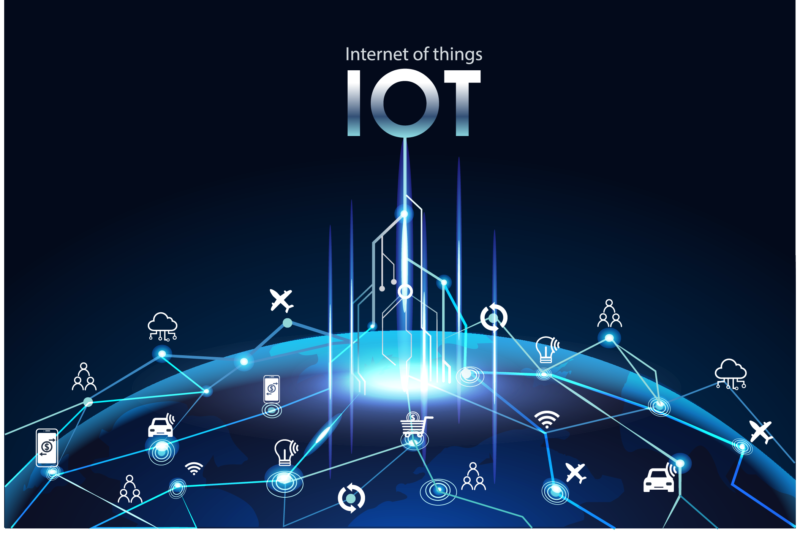
The edge. It’s the redefining of infrastructure and network to cope with the demands of the Internet of Things (IoT), the limitations of existing architecture and the potential of the cloud. It is, according to Forrester, a new layer of edge processing infrastructure and supporting software services driven by ever-increasing capacity demands that few architectures are equipped to handle. It is the future of designing the corporate architecture to support the potential of IoT and the slew of technologies that automate, generate data and transform processes.
Edge computing is when the cloud emerges from the sea, sheds its gills and develops opposable thumbs. It’s the use of computing power placed at the edge of the network that allows for data from devices to be processed at greater speeds and efficiencies – without necessarily going through a datacentre. It’s the instantaneous analysis of data, in near real-time and it has inordinate benefit to the company and the customer.
The IDC has defined it as, ‘Edge computing refers to a set of workloads that are run outside or on the periphery of the datacentre. Use cases include the Internet of Things (IoT) and industrial/embedded systems. In such cases, the workloads are managed by central IT, and the data is eventually backhauled into the datacentre. However, the proximity of the workload to the activity in question is necessary for providing actionable insight at reduced latency.’
Edge computing means a device can ‘decide’ on its own what actions it should take, based on the data it has collected, rather than waiting for an instruction from a datacentre. A ‘smart’ air conditioner, for example, can teach itself to turn on or off, depending on how many people it can sense are in a room. This means, with the edge, there’s no need to collect months of data to figure out how to best manage an air conditioner.
Three things are driving the edge – computing everywhere, the shift to artificial intelligence (AI) that’s become a big conversation in boardrooms globally, and the smart devices that people are using to drive the digital version of themselves.
The simplification of the data journey is ideally suited to the South African context. Computing on the edge is perfect for those situations when connectivity is limited and access to the cloud is both inefficient and slow. With the edge, the data is processed on demand, on location, thereby reducing delays and mitigating the demand on 24/7 connectivity. From a South African perspective, it makes sense to process data where it is collected, using the edge to preclude latency issues and reduce network traffic and congestion.
Cloud does allow for the use of technology in ways that continue to excite and impress, but the issues around connectivity are a challenge in the local environment. Load shedding, anyone? Even a fast network may not be enough to make decisions in time, however, and data is pouring out so fast that it’s like trying to put the Tribbles back into the tiny box. Impossible, even if you wanted to. Edge can be small and focused, it can handle complex tasks and it is fluid enough to adapt to use case and scenario.
It also has to be just a little bit confusing, because this is technology, after all. Edge computing is linked to fog computing. Some say the two are the same, some believe fog computing is just a branding exercise, and others define it as a facet of the edge. There is even a consortium for it – the OpenFog Consortium that is headed up by vendors such as Intel, Cisco and Microsoft. It defines the fog as ‘system-level horizontal architecture that distributes resources and services of computing, storage, control and networking anywhere along the continuum from Cloud to Things’.
Clear? Probably not without the right lights. Just push that button on the left.
Ultimately, fog and edge all draw from the same mindset and enterprise demand – the ability to reduce latency, increase efficiency and redefine the speed of computing while reducing costs and reliance on network, cloud and connectivity. It is a competitive differentiator that allows the organisation to refine architecture while aligning itself to the incoming potential of IoT. It is the forefront of intelligence by design and the edge of innovation. Excuse the pun.
Factors taking businesses to the edge
1. What is driving the development and adoption of the edge and why is it essential?
Chris Buchanan, Dell Client Solutions director Southern Africa: If it isn’t something your organisation is looking at, you run the risk of being put out of business. Cloud systems are powerful, but there’s no sense in sending everything to them. Edge devices curate the data being generated and only send the necessary information across; a lot of it is about efficiency. Autonomous vehicles will rely on edge – we cannot have self-driving cars stop working every time the internet goes down.
Alain du Toit, Apps & Infrastructure, Solution Sales professional, Microsoft: Three things are driving the edge – computing everywhere, the shift to artificial intelligence (AI) that’s become a big conversation in boardrooms globally, and the smart devices that people are using to drive the digital version of themselves.
Helen Kruger, MD, Troye: The need to improve business efficiencies and improve data accuracy and consistency is driving the development and adoption of the edge. This will, in turn, improve system processes and intelligence.
2. What technologies enable the edge and are essential to its success?
Colin Thornton, MD, Dial-a-Nerd and Turrito Networks: From a hardware perspective, it is usually not necessary to have fully-fledged servers on-site or within the network. However, you also cannot use a thin client or a dumb terminal. From a software perspective, AI is not essential but would be extremely helpful, as the more efficient the edge device, the less data it would need to send elsewhere.
Andrew Cruise, MD, Routed: Edge computing relies on a stack of newer technologies like SD-WAN to provide secure, reliable and acceptable performance access; businesses should embrace them and drive familiarity with these technologies to be able to benefit from edge sooner in the cycle and gain an advantage over rivals.
Chris Buchanan, Dell Client Solutions: Edge in the IoT world relies on devices that can sit near the source and handle complex tasks such as data sorting. Key to the solution is keeping the technologies involved open and scalable. Connectivity is also a critical component as often the data sourced is too vast to process at the edge. Cloud is also important because it introduces modular development and processing methodologies such as microservices.
3. What challenges are slowing the uptake and implementation of the edge in South Africa?
Andrew Cruise, Routed: Generally, the market for edge computing is not developed enough globally, so South Africa suffers, as do all geographies with a lack of suitable devices and certified reference architectures. Also, South Africa has problems around the reliability of power and security of edge locations and points of presence due to vandalism, among other issues.
Helen Kruger, Troye: One of the challenges impacting on local uptake and implementation is around the location of where personal information is stored at rest. With PoPI coming into effect soon, the journey of taking data into the cloud and the use of IoT devices will almost certainly be delayed.
Alain du Toit, Microsoft: We lack access to the skill sets that can deliver on these advanced business requirements. While we do have partners and companies that are capable of this level of skill, they are small and can’t scale. The availability of skills in South Africa is very, very thin and this is making the adoption of super-advanced technology both difficult and slow.
This article was first published in the August 2018 edition of ITWeb Brainstorm magazine. To read more, go to the Brainstorm website.

